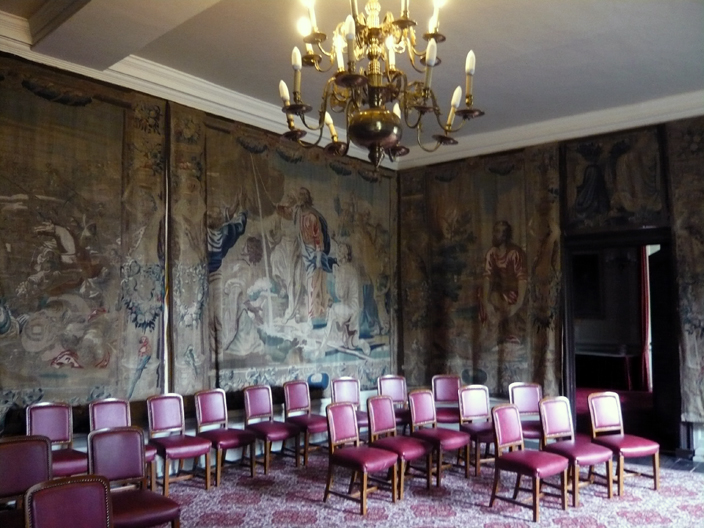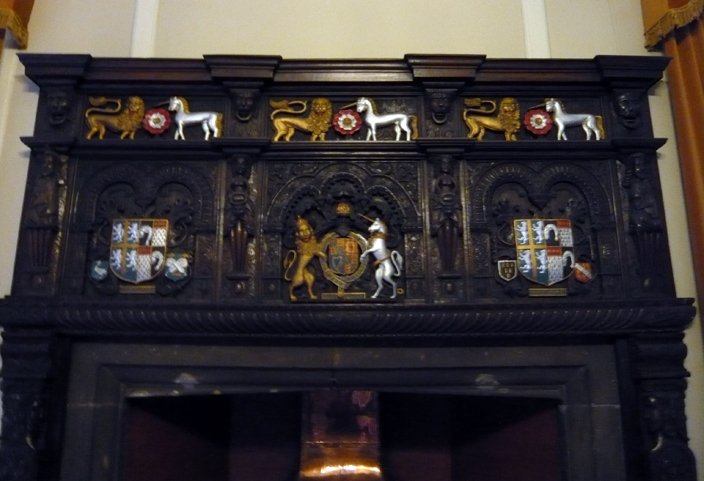
The Senate Suite is currently undergoing conservation.
The Senate Room Suite takes its name from the fact that the University Senate used to meet in it during the nineteenth century. It also hosted the Judges of Assize on their visits to Durham. Until the practice was abolished in 1971, these were judges that travelled around the country to hear the most serious criminal cases.
The most impressive features of this room are the magnificent seventeenth-century overmantel of the fireplace, which bears the arms of James I and VI and of Bishop James (1606-17), and the Flemish tapestries of the mid-seventeenth century, on which episodes from the biblical story of Moses are depicted. The tapestries originally hung in the Tunstall Gallery. They’ve recently been removed for conservation.
The ante-chamber to the Senate Room contains a fireplace with seventeenth-century Dutch tiles that were popular at the time. There was always a great deal of cross-cultural influence and trade between places, meaning that foreign importants were available, and no more so than in the residences of the wealthy.

The Senate Suite fireplace dates back to the seventeenth century. Other than the symbols of England (the lion and the unicorn), it bears the arms of James I, who was significant as he became the first joint king of England and Scotland in 1603. With this, the Castle's military role to protect the northern borders of England came to an end.

